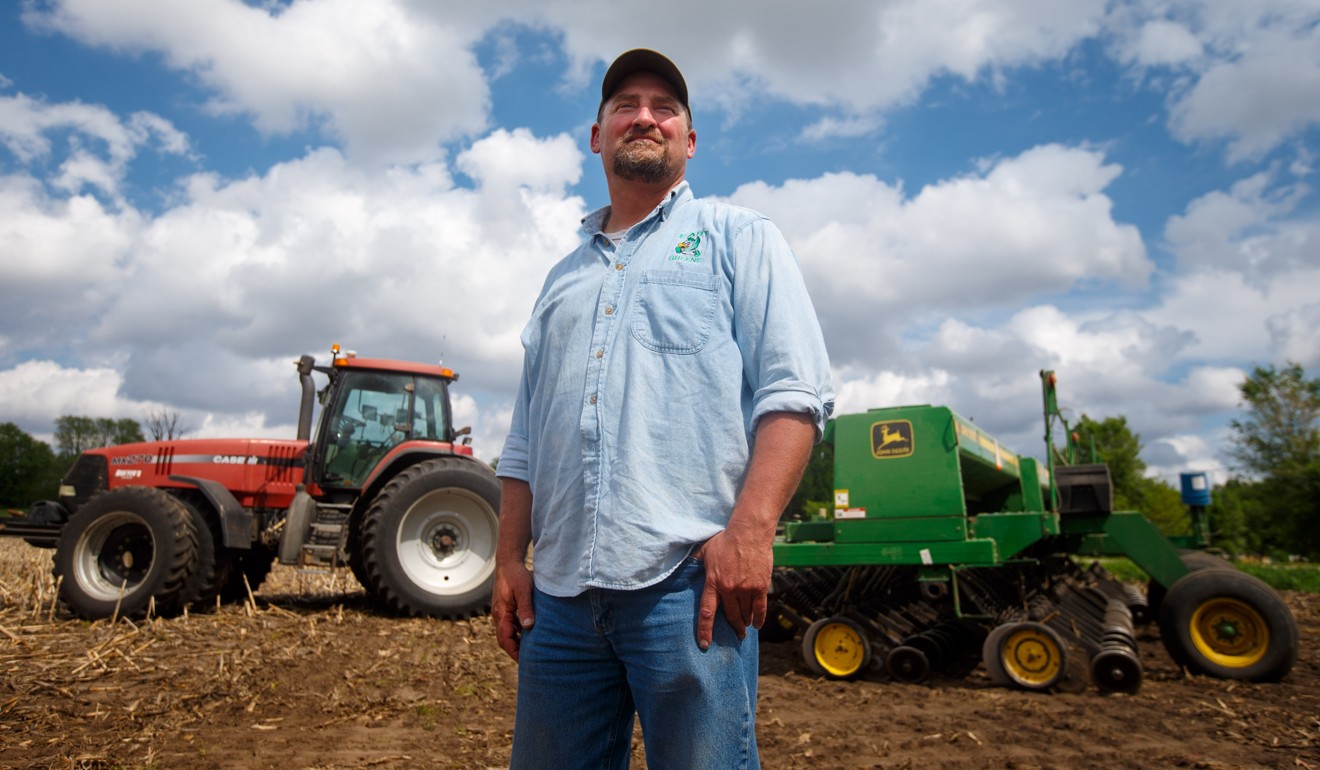
Donald Trump readies new round of aid for US farmers hit by trade war with China
- Administration is considering payments of US$2 per bushel to soybean growers, US$0.63 per bushel to wheat growers and US$0.04 per bushel to corn growers
- Package, which could exceed US$15 billion, is largely modelled on programme implemented last year, but with more generous payments
The Trump administration is preparing to announce another round of aid to farmers hurt by the trade war with China as soon as Thursday, people familiar with the plan said, a package of assistance that could exceed US$15 billion.
The aid plan is largely modelled on the programme the administration put in place last year after China slapped retaliatory tariffs on US agricultural products, though the payments will be more generous.
The administration is considering payments of about US$2 per bushel to soybean growers, US$0.63 per bushel to wheat growers and US$0.04 per bushel to corn growers to compensate for losses from the trade war, according to two people familiar with the payment levels, who asked not to be identified because the aid plan has not been made public.
The administration last year paid US$1.65 per bushel for soybeans, US$0.14 per bushel for wheat and US$0.01 per bushel for corn.
Other commodities also will receive payments in this year’s aid package, as they did last year, said the sources, who did not provide the rates.
Soybeans for July delivery fell as much as 1.5 per cent to US$8.19 a bushel in the minutes after Bloomberg reported the payment rates under consideration, before ending 1.2 per cent lower at US$8.22.
Karl Setzer, market analyst at Agrivisor in Bloomington, Illinois, said soybean futures dropped on “the knee-jerk reaction to possibly even more soybeans planted to take advantage of the subsidy”.

Republican Senator Joni Ernst of Iowa predicted the payment levels would anger corn farmers, unless the administration raises them.
“Corn farmers are going to be very upset about this,” Ernst said. “It’s better than the 1 cent per bushel that they got earlier but it’s not enough.”
Corn growers argued they were short-changed in last year’s US$12 billion trade assistance plan and campaigned for better treatment in the new round of aid. The National Corn Growers Association sent out a call to action last week urging farmers to call the White House to seek a higher payment for corn.
The outlines of the plan still could change since President Donald Trump can make adjustments any time before it is officially announced. The White House referred questions to the Agriculture Department.
“Details on the new trade mitigation programme will be forthcoming shortly, but we want to be clear that the programme is being designed to avoid skewing planting decisions one way or another,” the USDA said in an emailed statement.
The stand-off with China over trade is compounding the financial strain of five years of falling commodity prices and losses from spring flooding. American farm income dropped 16 per cent last year to US$63 billion, about half the level it was as recently as 2013.

It is directly hitting a key part of Trump’s political base: the rural voters that he won by a wide margin in 2016 and who are key to his re-election campaign.
The current plans call for some direct purchase of food by the government, as Trump indicated when he first announced the new round of trade aid, but payments to farmers would be the main element of the assistance.
Agriculture Secretary Sonny Perdue said last week that the aid package could go as high as US$20 billion, more than the US$15 billion Trump announced earlier this month.
While the payments last year were based on farmers’ current production, the basis will be modified, the people familiar with the plan said. The administration is considering basing payments on the acreage farmers plant this year and their historic yield of crops per acre, the people said.
Former Agriculture Department officials and economists have warned that a decision to base payments on current acres planted risks skewing farm production decisions and adding to the rising stockpiles of crops, particularly soybeans. That risks depressing commodity prices even after the current trade dispute is resolved.
The combination of a disparity in payments favouring soybeans over corn and rainy weather in the Midwest could encourage farmers to change plans and decide to plant soybeans rather than corn. Soybeans have a shorter growing season, so they can be planted later.

At the rates the administration is considering, “if payments are made on actual plantings that would really seem to push plantings towards beans, particularly with the wet spring”, said former USDA chief economist Joseph Glauber.
As of Sunday, farmers nationwide had planted only 49 per cent of the corn they had said they intended to plant, according to the USDA, the slowest progress in data going back to 1980. On average over the past five years, farmers had planted 80 pre cent of their intended crop at this point in the year.

